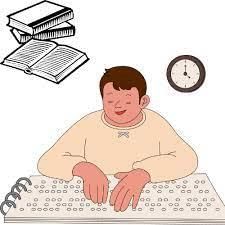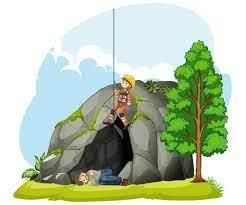Worksheet Solutions: Sharing Our Feelings - 2 | EVS for Class 3 PDF Download
Q1: Multiple Choice Questions (MCQs).
(i) What is the relationship between Seema and Ravi?
(a) Cousins
(b) Friends
(c) Siblings
(d) Classmates
Ans: (c) Siblings
The chapter mentions that Seema calls Ravi "Ravi bhaiya," which indicates that Ravi is Seema's brother.
(ii) What is Ravi's profession?
(a) Doctor
(b) Engineer
(c) Teacher
(d) Lawyer
Ans: (c) Teacher
Ravi is a teacher in a college.
(iii) What does Ravi use to help him navigate when he goes out?
(a) A white stick
(b) A guide dog
(c) A wheelchair
(d) A pair of glasses
Ans: (a) A white stick
Ravi, who is blind, uses a white stick when he goes out.
(iv) Who does Seema share her feelings with after returning from school?
(a) Her father and brother
(b) Her grandmother and her brother
(c) Her friends
(d) Her teachers
Ans: (b)
The summary mentions that Seema shares her feelings with her Nani (grandmother) and her brother.
(v) What is the special way of reading and writing used by people who are unable to see?
(a) Cursive script
(b) Braille script
(c) Handwriting
(d) Print script
Ans: (b)
Braille script is the special way of reading and writing used by people who are visually impaired.
Q2: Fill in the Blanks.
(i) How does Ravi read his books? He reads books with raised ______.
Ans: dots
Ravi reads books that have a row of raised points (dots) which he runs his fingers over.
(ii) Who invented the Braille script? The Braille script was invented by Louis ______.
Ans: Braille
The Braille script was invented by Louis Braille, a man from France.
(iii) What is Seema's grandmother unable to do properly? Seema's grandmother cannot see or ______ properly.
Ans: hear
In the chapter, it is mentioned that Seema's grandmother cannot see or hear properly.
(iv) Braille script is a special way of reading handwriting used by people who are unable to ________.
Ans: see
Braille is used by people who are unable to see.
(v) Louis Braille, who belonged to ________, is known as the father of Braille.
Ans: France
Louis Braille is known as the father of Braille, and he belonged to France.
Q3: True or False.
(i) Ravi's students help him with his lessons by taking notes for him.
Ans: False
Ravi's students help him by recording the lessons on tape, not by taking notes for him.
(ii) "Differently able" is the term used to describe people who are physically challenged.
Ans: True
"Differently able" is a term used to describe people who may have physical challenges or disabilities.
(iii) Seema was selected for the cricket team.
Ans: False
Seema was selected for the football team, not the cricket team.
(iv) Seema shares her feelings with her Nani and her brother after returning from school.
Ans: True
The summary states that Seema shares her feelings with her Nani and her brother.
(v) Seema's Nani can see and hear properly.
Ans: False
The summary mentions that Seema's Nani cannot see or hear properly.
Q4: Answer the following Questions.
(i) What kind of problems do people have in old age?
Ans:
- They sometimes face pain in their bones.
- They face issues with hearing.
- They lack good eyesight.
(ii) Have you ever needed a stick? When?
Ans: Yes, to pluck fruits from the tree in my garden.
(iii) Seema’s father reads the newspaper aloud to her Nani. How do you help old people?
Ans: I help my grandmother in remembering to take her medicines.
(iv) How does Ravi bhaiya come to know so many things without seeing them?
Ans: Ravi bhaiya comes to know so many things without seeing because he (in general, the blind people) has good hearing skills.
(v) Can you think about when you may need a stick?
Ans: To climb a tree, rock, or mountain, we might need a stick.
(vi) How many children could recognize the other children by only hearing them?
Ans: Five of the children could recognize the other children by only hearing them.
(vii) How many children could recognize the others by touching?
Ans: Three of the children could recognize the others by touching.
|
45 videos|182 docs|48 tests
|
FAQs on Worksheet Solutions: Sharing Our Feelings - 2 - EVS for Class 3
| 1. What are some effective ways to share our feelings? |  |
| 2. How can sharing our feelings improve our mental health? |  |
| 3. Is it important to share both positive and negative feelings? |  |
| 4. What are the benefits of being honest and open about our feelings? |  |
| 5. How can we create a safe and supportive environment for sharing our feelings? |  |
















